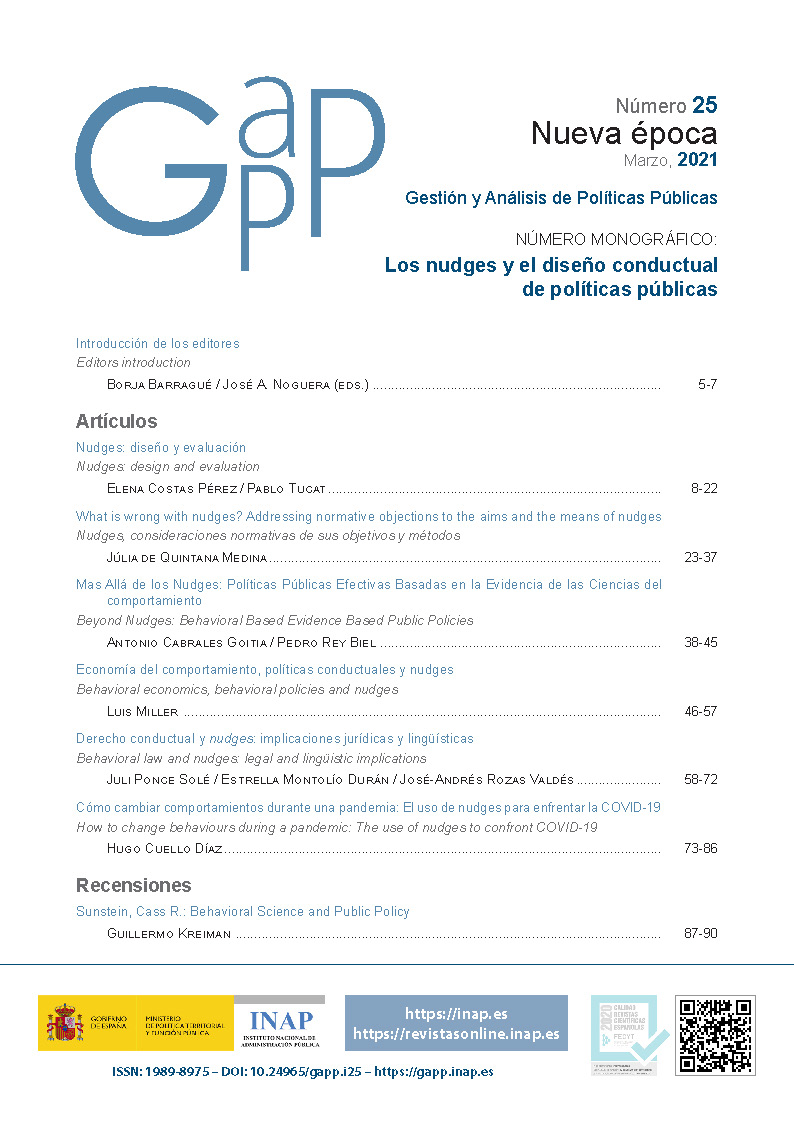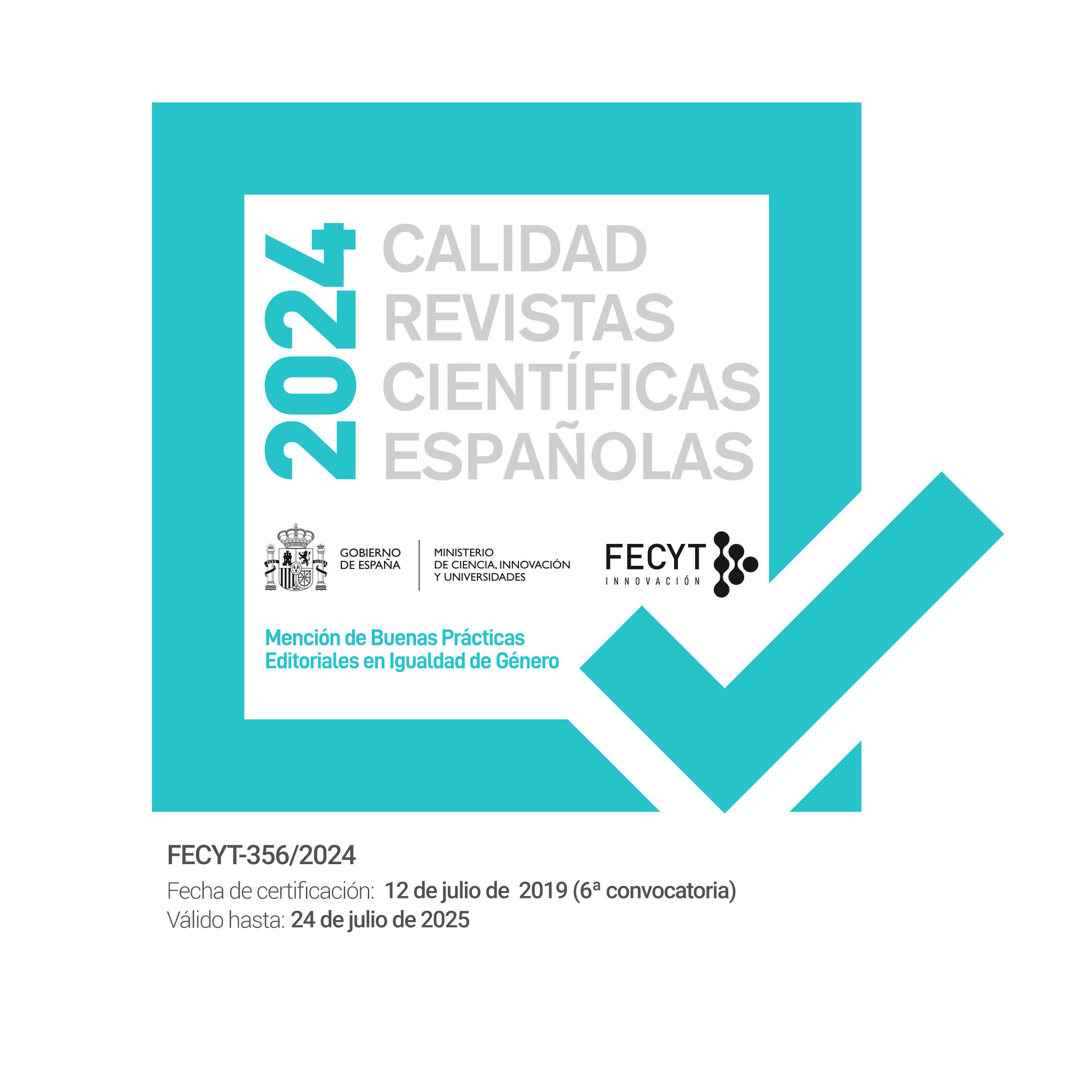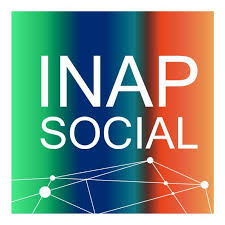Cómo cambiar comportamientos durante una pandemia: El uso de nudges para enfrentar la COVID-19
DOI:
https://doi.org/10.24965/gapp.i25.10873Palabras clave:
Nudges, Economía del Comportamiento, COVID-19Resumen
El presente estudio analiza la situación actual del uso de nudges para enfrentar la pandemia de la COVID-19. Se presentan las justificaciones teóricas y prácticas para el uso de los nudges durante una pandemia, así como ejemplos concretos, estudio de patrones y limitaciones del enfoque. Los nudges pueden considerarse como una herramienta complementaria a las restricciones de comportamiento que se han presentado en la mayoría de los países. Su enfoque puede ser efectivo a la hora de lograr los cambios de comportamiento necesarios para reducir el número de contagios, como incentivar a la gente a quedare en casa o lavarse las manos de forma regular.
Descargas
Citas
Abendroth-Dias, K. (27 de abril de 2020). Can behavioural science prepare us for the next pandemic? Apolitical. Consultado el 14 de junio de 2020. https://apolitical.co/en/solution_article/can-behavioural-science-prepare-us-for-the-next-pandemic
Álamo, S. (5 de agosto de 2020). La Policía se abre paso entre los vecinos de Tunte y consigue alojar a los migrantes en el centro previsto. Eldiario.es. Consultado el 13 de agosto de 2020. https://www.eldiario.es/canariasahora/365-dias-de-migraciones/vecinos-mantienen-barricada-tension-tunte-pese-59-migrantes-trasladados-dieron-negativo-coronavirus_1_6149862.html
Aunger, R., Schmidt, W.-P., Ranpura, A., Coombes, Y., Mukiri Maina, P., Nkatha Matiko, C. y Curtisa, V. (2010). Three kinds of psychological determinants for hand-washing behaviour in Kenya. Social Science & Medicine, 70(3), 383-391. https://doi.org/10.1016/j.socscimed.2009.10.038
Banerjee, A., Alsan, M., Breza, E., Chandrasekhar, A. G., Chowdhury, A., Duflo, E., Goldsmith-Pinkham, P. y Olken, B. A. (2020). Messages on COVID-19 Prevention in India Increased Symptoms Reporting and Adherence to Preventive Behaviors Among 25 Million Recipients with Similar Effects on Non-recipient Members of Their Communities (NBER Working Paper Series, 27.496). National Bureau of Economic Research. https://doi.org/10.3386/w27496
BIT (2020). Crafting effective communications during a crisis [Webinar: Applying behavioural insights to COVID-19 comms]. Behavioural Insights Team. https://www.bi.team/our-work/webinars/bit-webinar/
Bloomberg Cities (28 de enero de 2020). Messaging that hits home: 5 tips from tests underway in US cities. Consultado el 4 de julio de 2020. https://medium.com/@BloombergCities/messaging-that-hits-home-5-tips-from-tests-underway-in-u-s-cities-9e4f37b4ba63
Bohórquez, L. (10 de julio de 2020). Multas de hasta 3.000 euros por participar en fiestas sin mascarilla. Cadena SER. Consultado el 6 de agosto de 2020. https://cadenaser.com/emisora/2020/07/10/radio_mallorca/1594380739_413306.html
Briscese, G., Lacetera, N., Macis, M. y Tonin, M. (2020). Compliance with Covid-19 Social-Distancing Measures in Italy: The Role of Expectations and Duration (NBER Working Paper Series, 26.916). National Bureau of Economic Research. http://doi.org/10.3386/w26916
Brooks, S., Webster, R., Smith, L., Woodland, L., Wessely, S., Greenberg, N. y Rubin, G. J. (2020). The psychological impact of quarantine and how to reduce it: rapid review of the evidence. The Lancet, Rapid Review, 395(10.227), 912-920. https://doi.org/10.1016/S0140-6736(20)30460-8
Brown, D., Perera, D. y Kettle, S. (7 de agosto de 2020). COVID-19 prevention: Too much information? The Behavioural Insights Team. Consultado el 9 de agosto de 2020. https://www.bi.team/blogs/covid-19-prevention-too-much-information/
Burd, H. y Coleman, C. (8 de abril de 2020). Using behavioural insights to create a Covid-19 text service for the NHS. En The Behavioural Insights Team. Consultado el 4 de junio de 2020. https://medium.com/behavioural-insights/using-behavioural-insights-to-create-a-covid-19-text-service-for-the-nhs-e062d4071187
Dai, H., Milkman, K. L., Hofmann, D. A. y Staats, B. R. (2015). The impact of time at work and time off from work on rule compliance: the case of hand hygiene in health care. Journal of Applied Psychology, 100(3), 846-862. http://doi.org/10.1037/a0038067
De Buck, E., Van Remoortel, H., Hannes, K., Govender, T., Naidoo, S., Avau, B., Vande Veegaete, A., Musekiwa, A., Lutje, V., Cargo, M., Mosler, H.-J., Vandekerckhove, P. y Young, T. (2017). Approaches to promote handwashing and sanitation behaviour change in low- and middle-income countries: a mixed method systematic review. Campbell Systematic Reviews, 13(1), 1-447. https://doi.org/10.4073/csr.2017.7
Egan, M., Mottershaw, A., Roy-Chowdhury, V., Tagliaferri, G. y Xu, Y. (23 de marzo de 2020). Bright infographics & minimal text make handwashing posters most effective – result from an online experiment. The Behavioural Insights Team. Consultado el 06 de junio de 2020. https://www.bi.team/blogs/bright-infographics-and-minimal-text-make-handwashing-posters-most-effective/
Everett, J. A. C., Colombatto, C., Chituc, V., Brady, W. J. y Crockett, M. (20 de marzo de 2020). The effectiveness of moral messages on public health behavioral intentions during the COVID-19 pandemic [Preprint]. PsyArXiv. https://doi.org/10.31234/osf.io/9yqs8
Ford, T. N., Reber, S. y Reeves, R. V. (16 de junio de 2020). Race gaps in COVID-19 deaths are even bigger than they appear. Brookings. Consultado el 20 de agosto de 2020. https://www.brookings.edu/blog/up-front/2020/06/16/race-gaps-in-covid-19-deaths-are-even-bigger-than-they-appear/
Gigerenzer, G. y Gaissmaier, W. (2011). Heuristic Decision Making. Annual Review of Psychology, 62, 451-482. https://doi.org/10.1146/annurev-psych-120709-145346
Google Community Mobility Report (n. d.). Google. Consultado el 6 de julio de 2020. https://www.google.com/covid19/mobility/
Güell, O. (23 de agosto de 2020). El virus golpea a España por segunda vez. El País. Consultado el 24 de agosto de 2020. https://elpais.com/sociedad/2020-08-22/expertos-coronavirus.html
Hasenbush, A., Miyashita, A. y Wilson, B. (2015). HIV Criminalization in California. Penal Implications for People Living with HIV/AIDS. The Williams Institute. https://www.hivlawandpolicy.org/sites/default/files/HIV%20Criminalization%20in%20CA%202015.pdf
Halerm, D. y Harper, H. (21 de mayo de 2020). Behavioural Insights, the WHO and COVID-19. The Behavioural Insights Team. Consultado el 24 de mayo de 2020. https://www.bi.team/blogs/behavioural-insights-the-who-and-covid-19/
Hayes, D. (2008). Does the Messenger Matter? Candidate-Media Agenda Convergence and Its Effects on Voter Issue Salience. Political Research Quarterly, 61(1), 134-146. https://doi.org/10.1177/1065912907306472
Hale, T., Angrist, N., Boby, T., Cameron-Blake, E., Hallas, L., Kira, B., Majumdar, S., Petherick, A., Phillips, T., Tatlow, H. y Webster, S. (10 de diciembre de 2020). Variation in government responses to COVID-19 (Blavatnik School of Government Working Paper, BSG-WP-2020/032). Consultado el 13 de julio de 2020. https://www.bsg.ox.ac.uk/research/publications/variation-government-responses-covid-19
Huang, C., Le, N., Battle, M. (21 de mayo de 2020). A nudge toward hand hygiene: simple design features improved handwashing among Filipino students [IDinsight Blog]. Medium. Consultado el 06 de junio de 2020. https://medium.com/idinsight-blog/a-nudge-toward-hand-hygiene-simple-design-features-improved-handwashing-among-filipino-students-ae4fab1c94db
Hummel, D. y Maedche, A. (2019). How effective is nudging? A quantitative review on the effect sizes and limits of empirical nudging studies. Journal of Behavioral and Experimental Economics, 80, 47-58. https://doi.org/10.1016/j.socec.2019.03.005
Jordan, J., Yoeli, E., Rand, D. (2020). Don’t get it or don’t spread it? Comparing self-interested versus prosocialmotivations for COVID-19 prevention behaviors [Preprint]. PsyArXiv. https://doi.org/10.31234/osf.io/yuq7x
Judah, G., Donachie, P., Cobb, E., Schmidt, W., Holland, M. y Curtis, V. (2010). Dirty hands: Bacteria of faecal origin on commuters’ hands. Epidemiology and Infection, 138(3), 409-414. https://doi.org/10.1017/S0950268809990641
Judah, G., Aunger, R., Schmidt, W.-P., Michie, S., Granger, S. y Curtis, V. (2009). Experimental Pretesting of Hand-Washing Interventions in a Natural Setting. American Journal of Public Health (suplemento 2, 2009), 99(S2). https://doi.org/10.2105/AJPH.2009.164160
Marcus, J. (2020). The Fun Police Should Stand Down. The Atlantic. Consultado el 05 de agosto de 2020. https://www.theatlantic.com/ideas/archive/2020/08/containing-the-pandemic-isnt-a-job-for-cops/615298/
Martela, F. y Riekki, T. (2018). Autonomy, Competence, Relatedness, and Beneficence: A Multicultural Comparison of the Four Pathways to Meaningful Work. Frontiers in Psychology, 9 (artículo 1.157). https://doi.org/10.3389/fpsyg.2018.01157
Manun’Ebo, M., Cousens, S., Haggerty, P., Kalengaie, M., Ashworth, A. y Kirkwood, B. (1997). Measuring hygiene practices: a comparison of questionnaires with direct observations in rural Zaïre. Tropical Medicine & International Health, 2(11), 1.015-1.021. https://doi.org/10.1046/j.1365-3156.1997.d01-180.x
Michie, S., van Stralen, M. M. y West, R. (2011). The behaviour change wheel: A new method for characterising and designing behaviour change interventions. Implementation Science, 6(42). https://doi.org/10.1186/1748-5908-6-42
Ministerio de Sanidad (2020). Estudio ENE-COVID: Informe final estudio nacional de sero-epidemiología de la infección por SARS-COV-2 en España. Ministerio de Sanidad, Gobierno de España. Consultado el 02 de julio de 2020. https://www.mscbs.gob.es/ciudadanos/ene-covid/docs/ESTUDIO_ENE-COVID19_INFORME_FINAL.pdf
Obliko, N. (16 de mayo de 2020). Behind North America’s Lowest Death Rate: A Doctor Who Fought Ebola. Bloomberg (Prognosis). Consultado el 13 de agosto de 2020. https://www.bloomberg.com/news/articles/2020-05-16/a-virus-epicenter-that-wasn-t-how-one-region-stemmed-the-deaths
OMS (2012). Communication for behavioural impact (COMBI). A toolkit for behavioural and social communication in outbreak response (reference number WHO/HSE/GCR/2012.13). Consultado el 04 de julio de 2020. https://www.who.int/ihr/publications/combi_toolkit_outbreaks/en/
OMS (6 de abril de 2020a). New WHO/Europe tool for behavioural insights: critical to inform COVID-19 response [WHO Press Release]. Consultado el 11 de julio de 2020. https://www.euro.who.int/en/health-topics/health-emergencies/pages/news/news/2020/04/new-whoeurope-tool-for-behavioural-insights-critical-to-inform-covid-19-response
OMS (14 de mayo de 2020b). Behavioural insights are valuable to inform the planning of appropriate pandemic response measures [Declaraciones a la prensa del Director Regional para Europa de la OMS, Dr. Hans Henri P. Kluge]. Consultado el 11 de julio de 2020. https://www.euro.who.int/en/media-centre/sections/statements/2020/statement-behavioural-insights-are-valuable-to-inform-the-planning-of-appropriate-pandemic-response-measures
Pickering, A. J., Davis, J., Blum, A. G., Scalmanini, J., Oyier, B., Okoth, G., Breiman, R. F. y Ram, P. K. (2013). Access to Waterless Hand Sanitizer Improves Student Hand Hygiene Behavior in Primary Schools in Nairobi, Kenya. The American Society of Tropical Medicine and Hygiene, 89(3), 411-418. https://doi.org/10.4269/ajtmh.13-0008
Porter, C. (5 de junio de 2020). The Top Doctor Who Aced the Coronavirus Test. The New York Times. Consultado el 13 de agosto de 2020. https://www.nytimes.com/2020/06/05/world/canada/bonnie-henry-british-columbia-coronavirus.html
Romero, J. M. (26 de julio de 2020). Los muertos de la pandemia en España: 44.868. El País. Consultado el 20 de agosto de 2020. https://elpais.com/sociedad/2020-07-25/las-44868-muertes-de-la-pandemia-en-espana.html
Roy-Chowdhury, V., Perera, D., Tagliaferri, G., Mottershaw, A. y Egan, M. (31 de marzo de 2020). Young men are hardest to engage on coronavirus guidance [Blog]. The Behavioural Insights Team. Consultado el 16 de junio de 2020. https://www.bi.team/blogs/young-men-are-hardest-to-engage-on-coronavirus-guidance/
RTVE.es (18 de agosto de 2020). España, el país europeo con más casos de COVID-19 por población en los últimos 14 días. RTVE. Consultado el 25 de agosto de 2020. https://www.rtve.es/noticias/20200818/espana-pais-europeo-mas-casos-covid19-poblacion-ultimos-14-dias/2040438.shtml
Ryan, R. M. y Deci, E. L. (2017). Self-Determination Theory: Basic Psychological Needs in Motivation, Development, and Wellnes. The Guilford Press.
Schinalia et al. (2020). Informe no publicado, borrador de resultados del estudio. Recuperado de https://drive.google.com/file/d/1p_u3rHx2LqLeOM49hvDngI-RrWe0SNKB/view?usp=sharing
Sheeran, P. y Webb, T. L. (2016). The Intention-Behavior Gap. Social & Personality Psychology Compass, 10(9), 503-518. https://doi.org/10.1111/spc3.12265
Smith, M. (27 de julio de 2020). Face mask use surges after becoming compulsory in shops. YouGov (Health, medicine, & beauty). Consultado el 02 de agosto de 2020. https://yougov.co.uk/topics/health/articles-reports/2020/07/27/face-mask-use-surges-after-becoming-compulsory-sho
Southall, A. (7 de mayo de 2020). Scrutiny of Social-Distance Policing as 35 of 40 Arrested Are Black. The New York Times. Consultado el 20 de agosto de 2020. https://www.nytimes.com/2020/05/07/nyregion/nypd-social-distancing-race-coronavirus.html
Thaler, R. H. y Sunstein, C. R. (2009). Nudge: Improving Decisions About Health, Wealth, and Happiness. Yale University Press.
The Guardian (29 de abril de 2020). Revealed: the inside story of the UK’s Covid-19 crisis. The Guardian (Covid-19 investigations). Consultado el 17 de junio de 2020. https://www.theguardian.com/world/2020/apr/29/revealed-the-inside-story-of-uk-covid-19-coronavirus-crisis
The Lancet HIV (2018). HIV criminalisation is bad policy based on bad science. The Lancet HIV, 5(9) (E473). Consultado el 04 de agosto de 2020. https://doi.org/10.1016/S2352-3018(18)30219-4
Umberson, D. y Montez, J. K. (2010). Social Relationships and Health: A Flashpoint for Health Policy. Journal of Health and Social Behavior, 51 (suplemento 1), S54-S66. https://doi.org/10.1177/0022146510383501
Utych, S. y Fowler, L. (2020). Age-based messaging strategies for communication about COVID-19. Journal of Behavioral Public Administration, 3(1). https://doi.org/10.30636/jbpa.31.151
Umscheid, C. A., Mitchell, M. D., Doshi, J. A., Agarwal, R., Williams, K. y Brennan, P. J. (2015). Estimating the proportion of healthcare-associated infections that are reasonably preventable and the related mortality and costs. Infection Control & Hospital Epidemiology, 32(2), 101-114. https://doi.org/10.1086/657912
Vindigni, S. M., Riley, P. L. y Jhung, M. (2011). Systematic review: handwashing behaviour in low-to middle-income countries: outcome measures and behaviour maintenance. European Journal of Tropical Medicine & International Health, 16(4), 466-477. https://doi.org/10.1111/j.1365-3156.2010.02720.x
Wang, Ch., Liu, L., Hao, X., Guo, H., Wang, Q., Huang, J., He, N., Yu, H., Lin, X., Pan, A., Wei, S., Wu, T. (2020). Evolving Epidemiology and Impact of Non-pharmaceutical Interventions on the Outbreak of Coronavirus Disease 2019 in Wuhan, China. MedRxiv. https://doi.org/10.1101/2020.03.03.20030593
West, R. y Michie, S. (2020). A brief introduction to the COM-B Mode of behaviour and the PRIME Theory of motivation. Qeios (ID: WW04E6.2). http://doi.org/10.32388/WW04E6.2
Wittenberg, A. (17 de agosto de 2020). To Get People to Wear Masks, Try Comparing Them to Seatbelts and Helmets. Bloomberg [Citylab]. Consultado el 25 de agosto de 2020. https://www.bloomberg.com/news/articles/2020-08-17/what-works-to-persuade-people-to-wear-masks
Descargas
Publicado
Cómo citar
Número
Sección
Licencia
Derechos de autor 2021 Gestión y Análisis de Políticas Públicas

Esta obra está bajo una licencia internacional Creative Commons Atribución-NoComercial 4.0.












